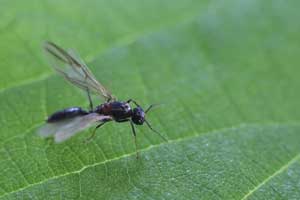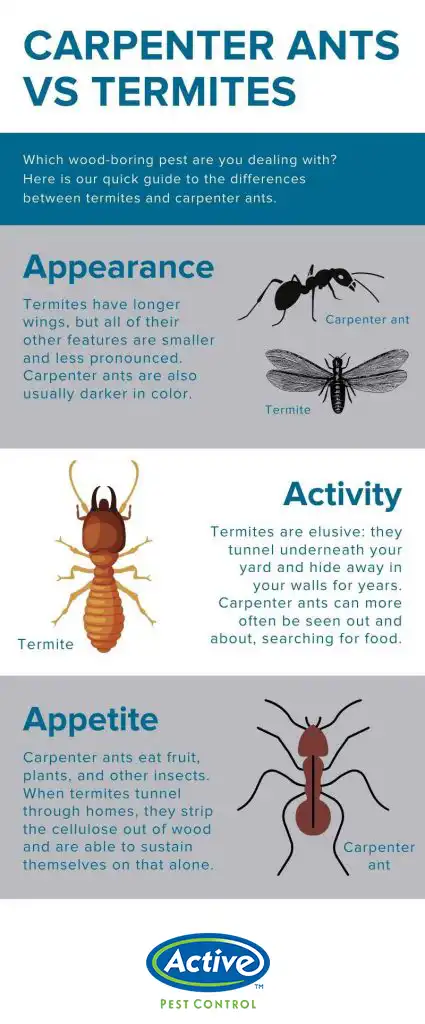Carpenter Ant vs Termite
Serving Atlanta Metro | Columbus | Augusta | Savannah

The difference between flying ants vs termites can be tricky. Given their similarities to termites, carpenter ants can be dealt with in ways that aren’t as efficient as possible. When you work with the pest control experts at Active Pest Control, we will identify exactly what type of pest you’re dealing with and put a plan in place that takes both control and prevention into account.
Identifying Carpenter Ants vs Termites
Being able to quickly identify wood-boring pests in your home will help you get rid of them faster. Here are some things to look out for to tell the difference between a termite or carpenter ant problem:
- Their appearance: Carpenter ants are a bit larger than termites. They have larger limbs and antennae and uneven sets of doubled wings. Termites have pairs of longer, evenly-sized wings, and less pronounced body segments.
- Their habits: Termites can eat away at your walls for years without being noticed. Conversely, carpenter ants often come out to look for food. Seeing lots of ants around damaged wood is a sure sign that you have carpenter ant damage.
- Their diet: Carpenter ants don’t consume the wood they chew through like termites—they eat fruits, plant nectar, and other insects. This is why you’ll often see them out and about in your house, while termites stay in your walls, eating to their hearts’ content.
Say Goodbye to Pest Problems for Good!
 Signs of Carpenter Ants vs Termites
Signs of Carpenter Ants vs Termites
Looking at the difference between damage caused can help to determine whether you’re dealing with carpenter ants vs termites. Carpenter ants like to make their way to sound wood through wood that’s already decaying. They leave wood shavings and a sandpaper-like texture behind on wood that they’ve traveled through.
Termites eat cellulose from inside the wooden structure, making stratified patterns. If you notice tunnels of mud forming in your yard, it means that termites are digging toward your house in hopes of taking over your wooden walls. Termites can silently cause very expensive damage that is also quite difficult and time-consuming to repair.
How to Get Rid of Carpenter Ants and Termites
Keeping your yard organized and keeping an eye out for cracks or potential insect entryways in your home can help to prevent wood-boring pests. However, once you have discovered carpenter ants or termites in your home, it is usually too late to deal with it yourself.
Your local pest control company can conduct an inspection, determining which kind of pest that you’re dealing with and the best plan to control and prevent them into the future. Contact our team at Active Pest Control today for a free quote on carpenter ants or termite control in Atlanta GA!
Back to Ant Exterminators, Control & RemovalCarpenter Ant vs Termite in Georgia
Serving Your Pest Needs for Over 35 Years Across Georgia

